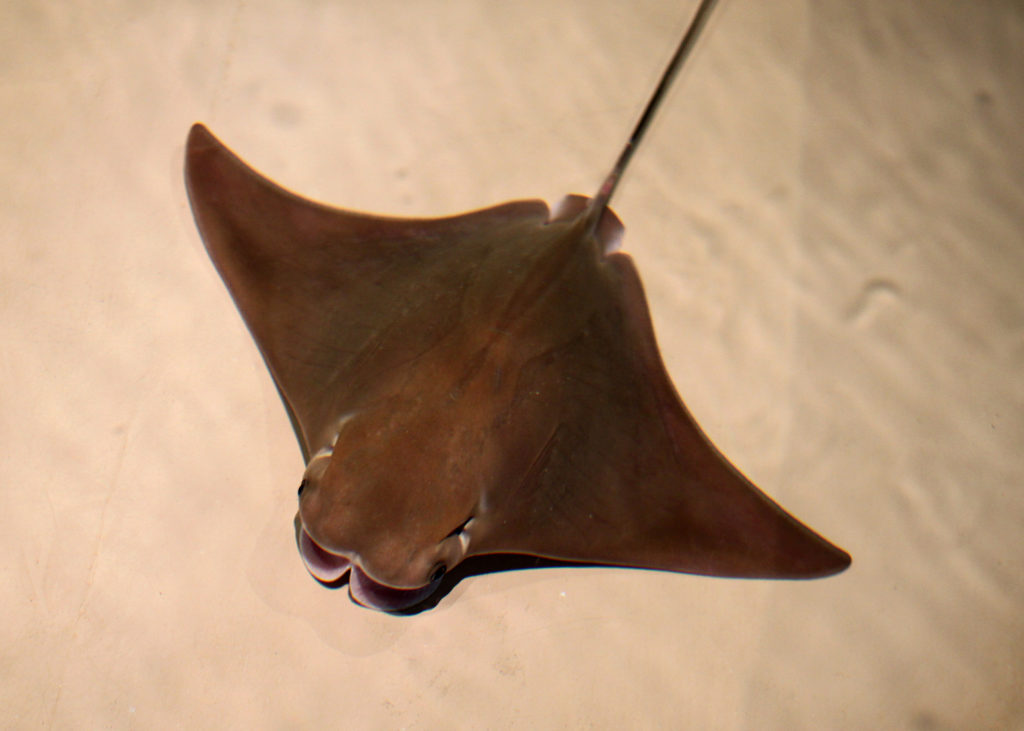
By Jill Mulford
In June, walkers may notice a ruckus of splashing next to our inlet and rock jetty. Right along the Chester River waterfront, often in the protected, shallow waters where the jetty curves to meet the erosion control wall, churning water and “shark-like fins” are evident. Chances are you are seeing Cownose Rays. They are brown with a lighter whitish color underneath and average 3 feet in width. These fish travel in schools of 20 or more and visit the bay as far north as Kent Island from June through October. They migrate south to warmer water during the winter. The Cownose Ray is kite-shaped and flaps its wings to stir up the sediment in the water and expose the clams and oysters it feeds on. In late summer, Cownose Rays mate and the female carries the single embryo within her body for about 12 months until it is born tail first. The pups, 11 to 18 inches wide, usually arrive in late June so you may be seeing a large proliferation around that time. Cownose Rays have a long tail with barbs and weak venom for protection against predators. Though it is not likely you would step on them, the effect might be similar to a bee sting if you did. If you should happen to catch one while out fishing, they are edible and are said to taste like scallops. Just like any fish, a fisherman would cut off the “wing” on each side of the body, fillet it, skin it, and cook it up for dinner.
brown but with spots and a translucent area around its nose. It is smaller than the Cownose Ray growing to be about 18 inches wide. They also have a tail but it is thicker and shorter than that of a ray and does not have stinging spines. Whether it’s a ray or a skate, both are fascinating to watch and add another wonderful dimension to living on the water.